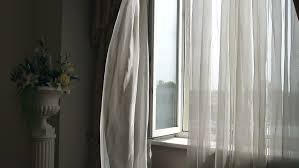… ‘these ‘bare minimum’ houses are the poorest performing homes that can legally be built’
– BRANZ referring to Minimum Code Build Homes.
We have always supported building beyond the minimum build code and this latest report from BRANZ contains some interesting points worth sharing.
The New Zealand building code sets out performance criteria that all building work must comply with. However, many people are not aware of the fact that this is the minimum level at which homes must comply. It does not necessarily mean they are healthy or a comfortable places to live.
Additionally, the fact remains that our code is well below many other similar countries.
The latest BRANZ report (2020) states that, ‘Available evidence suggests that a majority of new houses are constructed to comply with these minimum requirements but only a few go higher’. The report explains that ‘these ‘bare minimum’ houses are the poorest performing homes that can legally be built’, and that ‘many of the minimums are low compared to those in other developed countries such as Australia, many European states and the UK’.
The need to better educate on building performance
The report found that whilst going beyond the code may have higher upfront costs, lower running costs can recoup the additional cost within a reasonable time frame.
It further suggested that there needs to be more education on performance benefits to health and wellbeing and the recuperation of any additional upfront costs over time because of the sole traditional focus on upfront costs and what can be seen (i.e large living areas and attractive joinery).
BRANZ suggests that alternatives to the minimum building code should be considered that may ‘result in better building performance’.
Cold homes widespread
Their research found that many new houses were cold inside for the equivalent of several months over a year when not actively heated. Computer modelling of a sample of Christchurch homes consented in 2016 found that the mean indoor temperature dropped below 12oC for 116 days.

Strategies for improving building performance recognised
It is great to see that many of the strategies suggested in the report are all incorporated into our passive house and energy efficient homes, which includes high levels of insulation, air tightness, better performing windows, thermal bridge management and ventilation – also stating that ’Balanced Ventilation Units with heat recovery (MHRVs) is the preferred option in an airtight home’.
The report infers that the principles above create the best outcomes when considered together in the early design stages. We refer to this big picture consideration as a comprehensive design package. All factors designed and built to work to support each other, and not to create unacceptable cause and effect issues.
Through consideration of all factors and how they work together you can create a healthy comfortable living environment alongside energy efficiency – or you can chose the poorest performing home that you can legally build.
Reference: BRANZ BULLETIN Issue 650 – Building Beyond Code Minimums – June 2020





